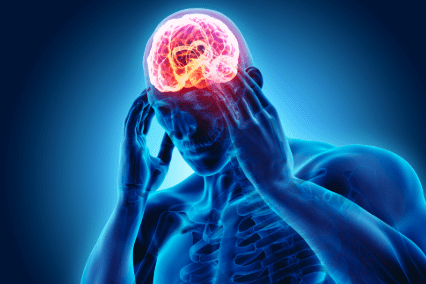The human body is an incredibly complex system, constantly working to maintain balance and ensure that every cell functions optimally. One of its most vital responsibilities is managing waste. Every day, our bodies generate waste products as a result of normal cellular processes, metabolism, and the food we consume. Removing these wastes efficiently is essential for health, energy, and overall well-being. But how exactly does the body collect and remove waste? Let’s take a closer look at this fascinating process.
At the heart of waste management in the body are specialized organs and systems that work together seamlessly. The kidneys, liver, skin, lungs, and digestive system all play unique roles in identifying, collecting, and eliminating waste. Each organ has its own method, tailored to the type of waste it handles. Despite their different approaches, they share a common goal: keeping the internal environment clean and balanced, which is often referred to as homeostasis.
The kidneys are often considered the body’s natural filters. They continuously process blood, removing excess water, salts, and metabolic byproducts. Inside each kidney, millions of tiny filtering units called nephrons play a key role in this process. Blood enters the nephrons under pressure, and waste products, along with some water, are filtered out into a structure known as the renal tubule. The remaining substances, including essential nutrients and most water, are reabsorbed back into the bloodstream. The filtered waste forms urine, which is eventually transported to the bladder and removed from the body. This process ensures that harmful substances do not accumulate, protecting organs and tissues from damage.
While the kidneys focus on filtering the blood, the liver handles chemical detoxification and processing. The liver is responsible for breaking down a variety of substances, including toxins from food, alcohol, and medications. It transforms these potentially harmful compounds into forms that can be safely excreted by the kidneys or the digestive system. For example, the liver converts ammonia, a toxic byproduct of protein metabolism, into urea, which the kidneys can safely eliminate in urine. This partnership between the liver and kidneys highlights the interconnected nature of the body’s waste removal systems.
The digestive system, particularly the intestines, also plays a significant role in waste management. After nutrients are absorbed from food in the small intestine, the leftover material continues into the large intestine. Here, water is absorbed, and the remaining solid waste is compacted into feces. Bacteria in the gut assist in breaking down some components that the body cannot digest on its own. The final waste is then expelled from the body during bowel movements. This process not only removes solid waste but also helps maintain a healthy balance of gut bacteria, which supports digestion and immune function.
Another often overlooked but vital component of waste removal is the skin. The skin is the body’s largest organ and serves as a barrier against external threats, but it also participates in excretion through sweating. Sweat contains water, salts, and trace amounts of metabolic waste, which the body releases when temperature rises or during physical activity. This process helps regulate body temperature while also contributing to the elimination of certain toxins.
The lungs, too, are essential in removing waste, though they do so in a gaseous form. Every time we breathe, our lungs expel carbon dioxide, a byproduct of cellular respiration. Cells use oxygen to produce energy, and carbon dioxide is generated as a waste product. If carbon dioxide were allowed to build up in the blood, it could disrupt the body’s acid-base balance and interfere with vital cellular functions. By exhaling carbon dioxide, the lungs maintain proper blood chemistry and support overall health.
It is remarkable how these systems work in harmony, often without us even thinking about them. Each system has its own checks and balances to ensure waste is effectively collected and removed. For instance, when the kidneys sense low water levels, they conserve water by concentrating urine. Similarly, the liver adjusts its detoxification processes based on the amount and type of substances in the blood. The body is finely tuned to respond to changes, demonstrating an impressive level of adaptability.
The efficiency of the body’s waste removal processes also depends on lifestyle and overall health. Adequate hydration is essential for the kidneys and digestive system to function properly. A diet rich in fiber supports the digestive tract and facilitates smooth elimination of waste. Regular exercise promotes circulation, sweating, and proper lung function, all of which contribute to toxin removal. Sleep and stress management are equally important, as they influence hormone balance and the effectiveness of metabolic processes. By taking care of these daily habits, we support the body’s natural ability to maintain cleanliness and balance.
However, when waste removal systems are compromised, it can lead to a range of health problems. Kidney dysfunction can result in the buildup of harmful substances in the blood, while liver disorders can impair detoxification. Constipation, often caused by a poor diet or inadequate hydration, slows the elimination of waste from the digestive system. Skin problems may also reflect the body’s attempt to excrete excess toxins. Maintaining healthy habits, seeking regular medical checkups, and addressing symptoms early are crucial steps in ensuring these systems continue to work effectively.
Understanding how the body collects and removes waste can also enhance our appreciation for the intricate design of human physiology. It is easy to take for granted how waste products are managed silently and continuously. From filtering blood and metabolizing chemicals to expelling carbon dioxide and sweating, the body employs a variety of strategies to maintain a clean internal environment. This knowledge encourages us to make choices that support these natural processes, fostering long-term health and vitality.
In conclusion, the collection and removal of waste in the human body is a coordinated effort involving multiple organs and systems. The kidneys, liver, digestive system, skin, and lungs each contribute uniquely, ensuring that harmful substances are removed efficiently while essential nutrients and water are retained. This intricate network of processes safeguards the body from the accumulation of toxins and supports overall well-being. By understanding and supporting these natural functions through healthy lifestyle choices, we allow our bodies to perform at their best, maintaining the balance and vitality that are essential to life.






